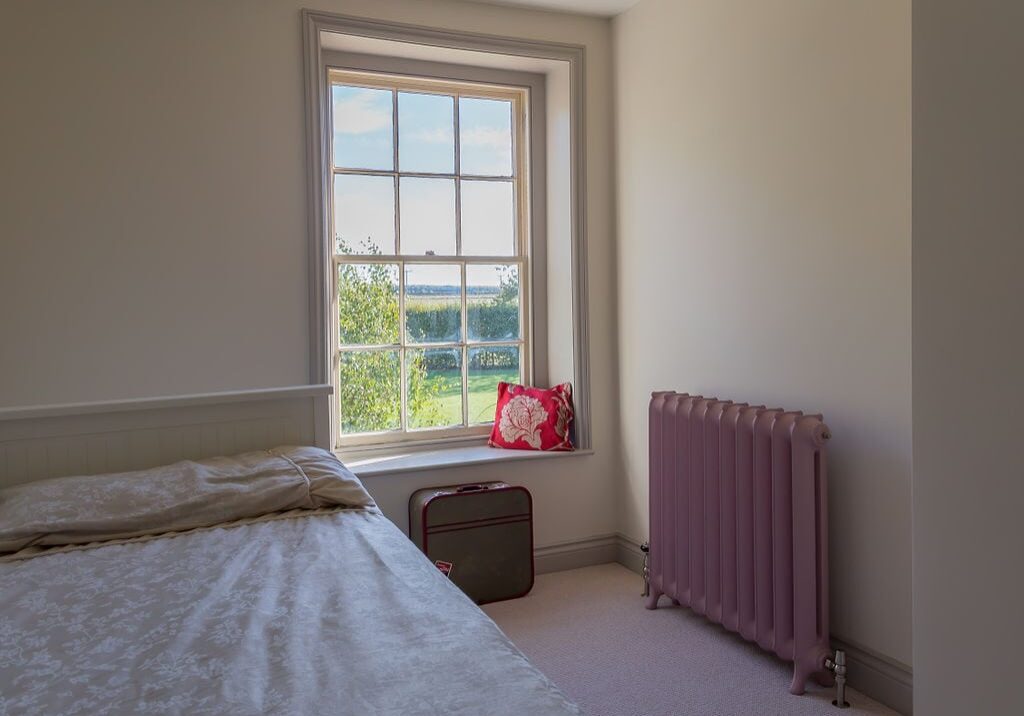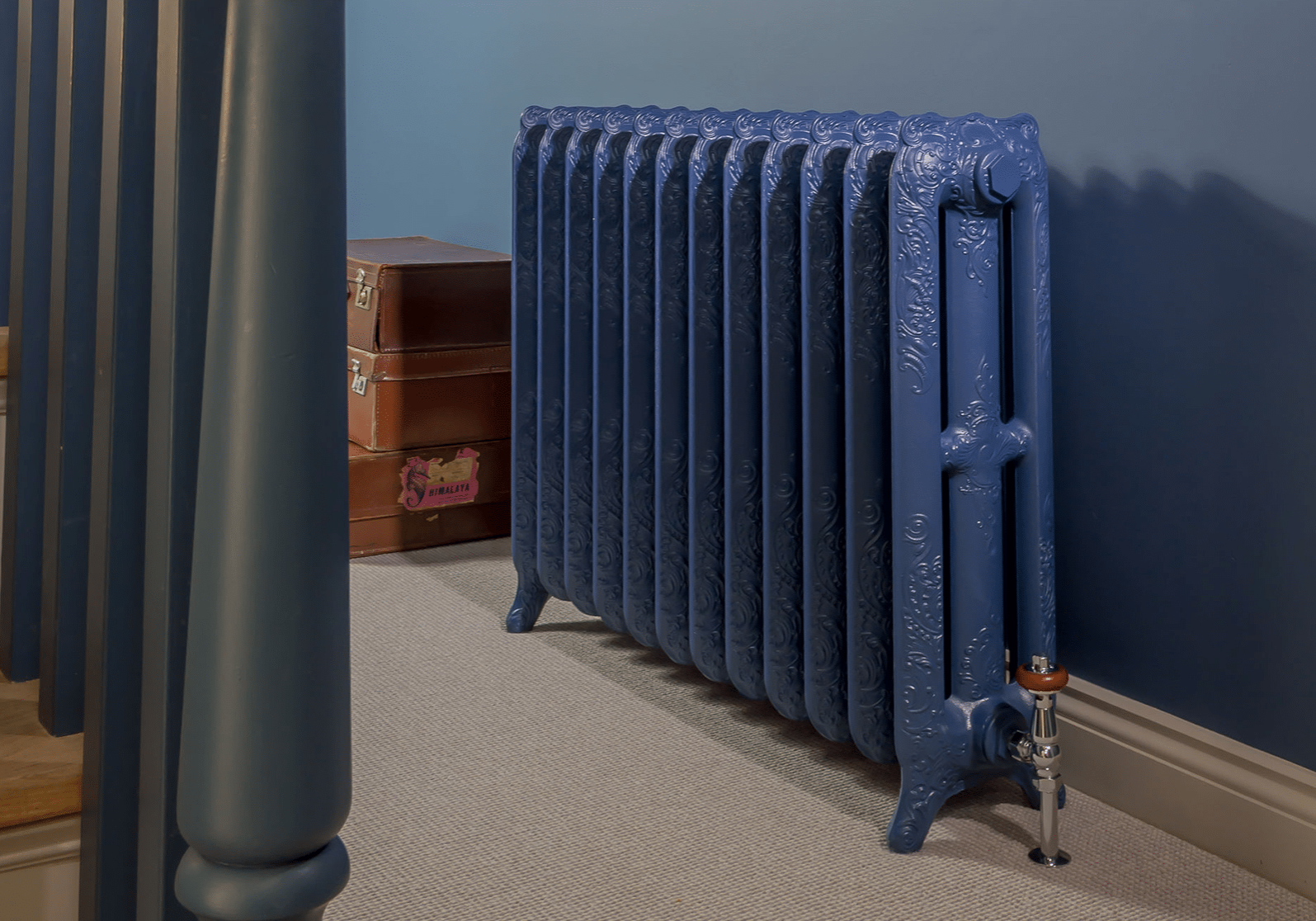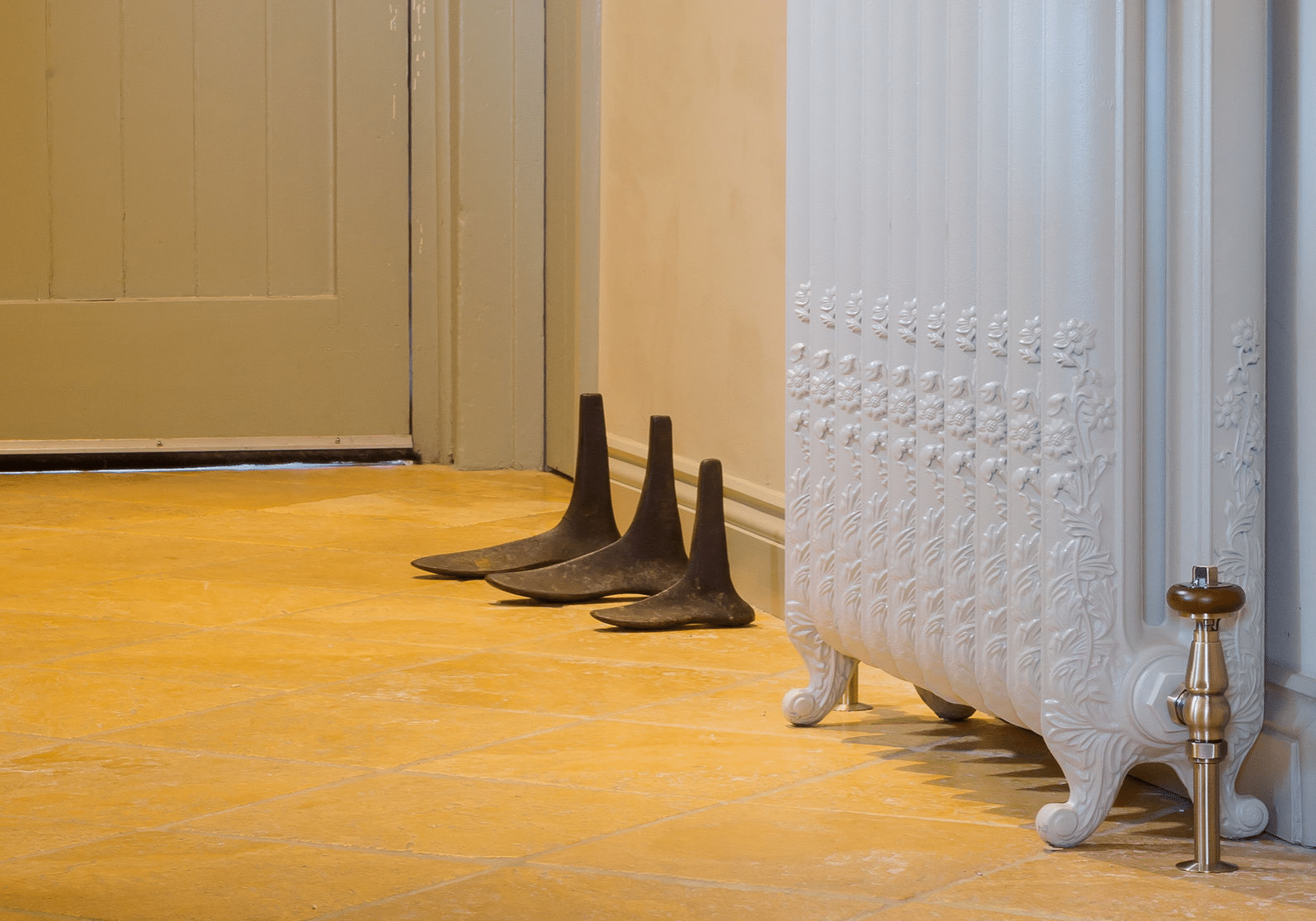Electric Radiator BTU Guide
Getting your electric radiator’s BTU output right isn’t just about comfort; it’s about efficiency, energy bills, and making the most of your heating investment. Whether you’re upgrading from storage heaters or adding zoned heating to specific rooms, understanding BTU requirements transforms guesswork into precision. This guide cuts through the confusion with practical calculations, real-world examples, and insider tips over two decades of heating expertise.
What exactly does BTU mean for electric radiators?
BTU stands for British Thermal Unit and measures the amount of energy needed to heat one pound of water by one degree Fahrenheit. For electric radiators, this translates to the heat output your radiator can deliver to warm your space effectively.
Electric radiators convert all consumed power into heat, achieving 100% efficiency at the point of use. This efficiency surpasses traditional central heating, ensuring you receive maximum value from every BTU your radiator generates.
Think of BTU as your radiator’s heating capacity. A 1,000 BTU electric radiator can warm a small bedroom, whilst a 5,000 BTU model handles larger living spaces. The key is matching your room’s heat loss to your radiator’s output.
How do you calculate BTU requirements for your space?
The foundation of any BTU calculation starts with your room’s cubic volume. Measure your room’s height, width, and length in metres, then multiply these figures together. This gives you the basic volume that needs heating.
A room’s BTU requirement is based upon the cubic volume of the space multiplied by four, factoring in what’s above, below, and beside the room. But that’s just the starting point; several factors affect your final requirements.
Room position matters significantly. Ground floor rooms need more BTUs than upper floors because heat rises. Corner rooms require higher outputs than internal rooms due to increased external wall exposure. Single or double-glazed windows, window size, and the number of outside walls all impact BTU requirements.
Here’s a practical approach: As a general rule, you’ll need approximately 100 watts per square metre of room space. For BTU conversion, multiply watts by 3.41. So a 20 square metre room needs roughly 2,000 watts or 6,820 BTUs.
Which factors increase your BTU requirements?
Windows are notorious for letting heat escape. The larger the window, the more heat you’ll lose. Single glazing can double your BTU requirements compared to double glazing. Bay windows and French doors create even greater heat loss.
Wall construction significantly impacts calculations. Single brick walls require higher BTU outputs than newer cavity walls with insulation. Victorian properties often need 20 30% more heating capacity than modern builds.
Ceiling height affects volume dramatically. Standard 2.4 metre ceilings are manageable, but rooms with 3 metre or higher ceilings need substantially more BTUs. For larger rooms or spaces with poor insulation, consider slightly higher wattage to compensate for heat loss.
Room usage patterns also matter. Bedrooms can run at lower temperatures than living areas. Bathrooms need quick heat-up capability. Home offices require consistent temperatures throughout the day.
How do electric radiators compare to traditional heating for BTU efficiency?
Electric radiators are 100% efficient at the point of use, delivering 20 40% improvement over traditional radiators. This efficiency means you need fewer BTUs to achieve the same comfort level.
Traditional central heating loses heat through pipes, boiler inefficiencies, and system heat-up times. Electric radiators heat up faster than traditional central heating, with thermal fluid-filled models providing sustained warmth even after switching off.
The zoning advantage of electric radiators changes BTU calculations entirely. Instead of heating your whole home to warm one room, you can target specific spaces. Managing each electric radiator individually allows you to create different heating zones throughout the property.
This zoning capability means you can size radiators precisely for each room’s needs rather than oversizing to compensate for system losses.
What BTU outputs do different room types typically need?
Bedrooms typically need 40 60 BTUs per square foot, depending on insulation and window area. A 12 square metre bedroom usually requires 1,600 to 2,400 BTUs or 470 to 700 watts.
Living rooms need 50 70 BTUs per square foot due to higher ceiling heights and larger windows. Factor in additional BTUs for bay windows, French doors, or conservatory connections.
Bathrooms require quick heat-up capability, often needing 70 80 BTUs per square foot. The high humidity and frequent temperature changes demand responsive heating.
Kitchens need less heating due to heat from cooking appliances, typically 40 50 BTUs per square foot. However, consider morning heat-up times when appliances aren’t generating heat.
Home offices need consistent temperatures, usually 50 60 BTUs per square foot, with good insulation. Factor in heat from computers and lighting.
How do you size electric radiators using BTU calculations?
We recommend choosing a radiator size within a 10% range of your calculated BTU requirement. If choosing between too small or too large, always buy an oversized one. You can always turn down a bigger radiator, but you can’t make a smaller one give more heat.
Consider multiple radiators for larger spaces rather than one oversized unit. Many rooms have more than one radiator to achieve the required BTU level. This approach provides better heat distribution and more flexible control.
When selecting Paladin electric radiators, you’re choosing precision-engineered heating that maximises BTU effectiveness. Our cast iron construction retains heat longer than steel alternatives, effectively increasing your useful BTU output after the heating switches off.
How do you verify that your BTU calculations work in practice?
Monitor your electric radiator’s performance over the first few weeks. Modern electric radiators provide energy usage statistics so you can track actual consumption against your calculations.
Room temperature consistency indicates correct BTU sizing. If temperatures fluctuate significantly, you may need higher BTU output. If the room overheats quickly, your calculations may be oversized.
Energy bills provide the ultimate test. Efficient BTU matching should deliver comfort without excessive running costs. Programmable thermostats allow you to heat rooms only when needed, reducing energy costs.
Seasonal adjustments help fine-tune your BTU requirements. Spring and autumn may need lower outputs, whilst deep winter might require your radiator’s full capacity.
What mistakes should you avoid when calculating BTUs?
Underestimating heat loss is the most common error. Selecting a radiator with insufficient heat output means your room never reaches the optimum temperature. Account for all windows, external walls, and room height properly.
Ignoring thermal mass differences between radiator types can affect BTU effectiveness. Cast iron radiators like Paladin’s models retain heat longer, effectively extending your BTU output beyond the electrical input period.
Forgetting about future changes can make calculations obsolete. Consider potential insulation improvements, window replacements, or room usage changes that might affect BTU requirements.
Room measurement errors compound through the calculation process. Always double-check your measurements to ensure accuracy. Even small errors can significantly affect your final BTU requirements.
Why choose Paladin for your electric radiator BTU needs?
Paladin combines traditional craftsmanship with modern electric technology, delivering BTU outputs that work harder for longer. Cast iron material ensures sturdiness and prolonged warmth, with slow heating but reliable heat retention.
Our bespoke manufacturing approach means you can specify exact BTU requirements rather than settling for standard outputs. Custom finishes and colour matching ensure your precisely calculated heating doesn’t compromise your interior design.
All Paladin radiators come with a 10-year warranty, giving you confidence in your BTU investment. Our UK manufacturing and dedicated foundry ensure consistent quality and performance.
Technical support helps you get BTU calculations right the first time. We offer a free BTU calculator and expert guidance to determine the right heat output for your space.
Transform your heating efficiency with precisely calculated BTU outputs from Paladin’s electric radiator range. Contact our heating specialists today for personalised BTU calculations and discover how our cast iron electric radiators can deliver superior comfort and efficiency for your home.
“I want to say thanks and how fantastic the radiators look along with the cast quality and the excellent painting and polishing finish. I now can’t wait to get them installed! Many thanks again for all your help and assistance.”
“Thank you for all your help, we will definitely recommend Paladin to anyone we know who is looking for cast iron radiators and will get in touch when we’re needing radiators for our ground floor.”





